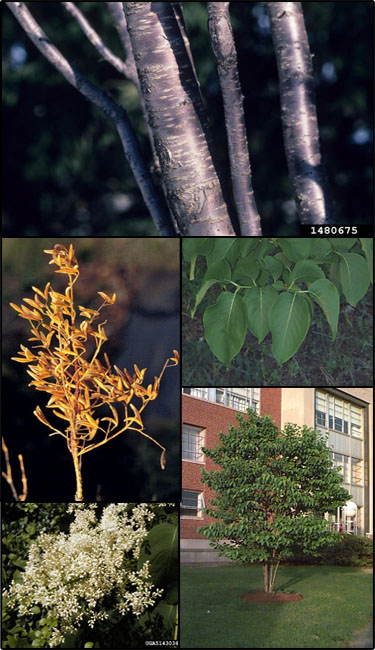Japanese tree lilac (Syringa reticulata)
 Description: Grown as an ornamental tree in Europe and North America. Popular as a garden plant or an accent in a shrub border.
Description: Grown as an ornamental tree in Europe and North America. Popular as a garden plant or an accent in a shrub border.Habit: Deciduous, large shrub or small tree; stiff, spreading branches; rounded crown; 20-30 ft tall and 15-25 ft wide; medium growth rate; medium texture.
Leaves: Opposite, simple, entire leaves, 2-5 in long, rounded leaf base, dark green in color, out in early spring.
Stems: Stiff; erect; gray-brown in color; shiny; horizontal lenticels.
Flowers: Off-white in color, fragrant, borne in large terminal panicles, panicles can be up to 1 ft long and 10 in wide, showy; blooms in early Summer.
Fruit and seeds: Capsules borne in large panicles, blunt tips, tan in color, warty, dehiscent, 2 celled, 4-6 in long, very attractive in fall and winter.
Habitat: Native to northern Japan. Grows well in moist, well-drained, slightly acidic soils.
Reproduction: By seed or cuttings.
Similar species: Peking Tree Lilac (Syringa pekinensis).
Monitoring and rapid response: Cutting or girdling. Credits: The information provided in this factsheet was gathered from the University of Connecticut Horticulture Plant Database.
Individual species images that appear with a number in a black box are courtesy of the Bugwood.org network (http://www.invasive.org).Individual photo author credits may not be included due to the small display size of the images and subsequent difficulty of reading the provided text. All other images appear courtesy of Google (http://images.google.com).
